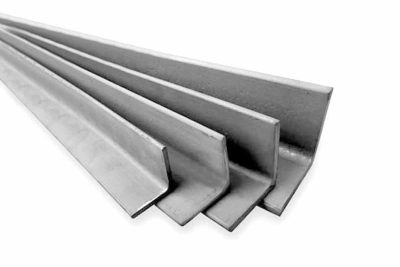
5052 aluminum angle is a versatile and highly durable alloy widely used in various industries. Known for its exceptional corrosion resistance, lightweight nature, and high strength, this aluminum alloy is ideal for applications in marine, aerospace, construction, and manufacturing. This blog will explore the properties, benefits, and common uses of 5052 aluminum angle to help you understand why it’s a preferred choice in many industries.
What is 5052 Aluminum Angle?
5052 aluminum is an alloy primarily composed of aluminum, magnesium, and chromium. It belongs to the 5xxx series, which is known for excellent corrosion resistance, especially in saltwater environments. The angle shape of this aluminum makes it useful for structural applications, providing support and reinforcement in various designs.
Key Properties of 5052 Aluminum Angle
1. Corrosion Resistance
One of the most notable characteristics of 5052 aluminum is its exceptional resistance to corrosion. This makes it perfect for marine applications, where exposure to saltwater is a major concern. It also resists industrial chemicals and atmospheric conditions better than many other aluminum alloys.
2. High Strength and Durability
5052 aluminum angle has a good balance of strength and flexibility. While not as strong as 6061 aluminum, it is still suitable for structural applications requiring moderate strength. Its durability ensures long-lasting performance even under tough conditions.
3. Lightweight Nature
Aluminum is naturally lightweight compared to other metals, making it an excellent choice for applications where weight reduction is critical. This makes 5052 aluminum angle ideal for aerospace, transportation, and marine industries.
4. Weldability
Unlike some other aluminum alloys, 5052 is highly weldable. It can be welded using various methods, including TIG and MIG welding, without losing its corrosion-resistant properties. This makes it a popular choice in fabrication and manufacturing.
5. Good Workability
5052 aluminum can be easily bent, cut, and shaped without cracking or breaking. This makes it a great option for custom applications where forming and machining are necessary.
Common Applications of 5052 Aluminum Angle
5052 aluminum angle is widely used in industries where strength, corrosion resistance, and lightweight materials are essential. Some of its most common applications include:
1. Marine Industry
Due to its excellent resistance to saltwater corrosion, 5052 aluminum is extensively used in boat construction, docks, ship fittings, and offshore structures.
2. Aerospace Industry
Lightweight and durable, 5052 aluminum angle is used in aircraft components, structural supports, and aerospace frames where corrosion resistance is crucial.
3. Construction and Architecture
5052 aluminum angle is used in building frameworks, bridges, and architectural designs due to its strength and ability to withstand environmental factors.
4. Transportation and Automotive Industry
This alloy is used in truck trailers, rail cars, and vehicle frames where a combination of strength, weight reduction, and corrosion resistance is required.
5. Industrial and Manufacturing
5052 aluminum angle is commonly used in machine parts, storage tanks, chemical equipment, and other industrial components that require durability and resistance to harsh conditions.
Benefits of Choosing 5052 Aluminum Angle
-
Longevity: Resistant to corrosion and wear, ensuring a longer lifespan for structures and components.
-
Low Maintenance: Requires minimal upkeep compared to other metals, reducing overall maintenance costs.
-
Sustainability: Aluminum is 100% recyclable, making it an eco-friendly choice for industries focused on sustainability.
-
Cost-Effective: While not the cheapest aluminum alloy, its durability and performance make it a cost-effective investment in the long run.
How to Work with 5052 Aluminum Angle
When working with 5052 aluminum angle, consider the following tips to ensure optimal results:
-
Cutting: Use carbide-tipped saw blades or shears for clean cuts.
-
Welding: Employ TIG or MIG welding for strong, corrosion-resistant welds.
-
Bending & Forming: Utilize proper bending techniques to avoid stress fractures.
-
Surface Finishing: While naturally corrosion-resistant, anodizing or powder coating can further enhance durability.
Conclusion
5052 aluminum angle is a reliable and versatile alloy that offers strength, corrosion resistance, and ease of fabrication. Whether you need it for marine, aerospace, construction, or industrial applications, this alloy provides an excellent balance of durability and performance. If you’re looking for a lightweight yet strong material for your next project, 5052 aluminum angle is a top choice.





Leave a Reply